This may be the an unspeakably stupid question for an electrical/computer engineering student to ask, but I ran across a few parts I didn't recognize (which, after some research, I found out were glass tube fuses and automotive fuses), and they made me wonder...
So, a mechanical or thermal fuse I get; enough current, and a switch gets thrown or a piece of solder attaching a spring to a pad melts and the connection essentially ends (ignoring arcing).
But I am holding a glass tube with two metal terminals, probably some gas internally, and a glass body. There are multiple ways I could see that the thing might work (e.g. the gas or the glass is conductive, but highly susceptible to temperature changes, shattering the body in high current), but since I can't seem to find the exact mechanism anywhere online, how do they work?
-- Additional, more general question --
If they are designed to shatter at high current, well... Why are they still in use? It seems potentially dangerous, or at least fantastically annoying, to have components which leave broken glass everywhere in an expected use case.
edit: It was a very thin wire, and I have awful vision, but it now makes sense.

